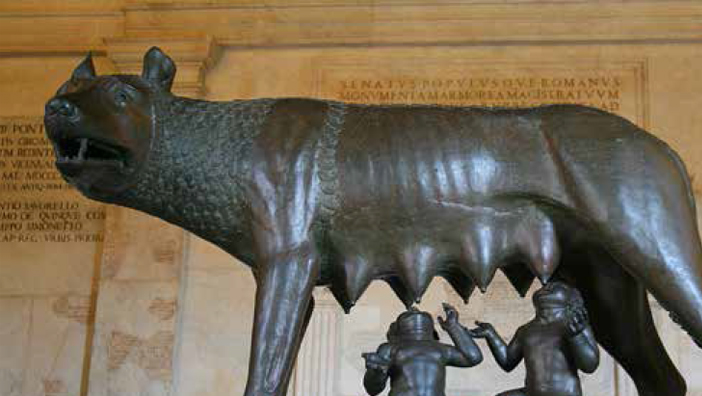
ว่าด้วยแนวทางของการศึกษาประวัติศาสตร์สมัยโบราณ
THE WAYS AND CONCEPTS FOR STUDYING ANCIENT HISTORY
โดย พิพัฒน์ กระแจะจันทร์ / By Pipad Krajaejun
Damrong Journal, Vol 13, No.1, 2014
บทคัดย่อ:
บทความที่เขียนถึงแนวคิดเกี่ยวกับการศึกษาประวัติศาสตร์สมัยโบราณในไทยมีอยู่ไม่มากนัก บทความนี้ได้เค้าโครงหลักมาจากหนังสือ“ทฤษฎี ตัวแบบและแนวคิดในประวัติศาสตร์โบราณ” (Theories, Models and Concepts in Ancient History) เขียนโดยเนวิล มอร์เลย์ (Neville Morley) ถึงจะเป็นแนวคิดจากตะวันตกแต่ผู้เขียนก็ได้หยิบยกประเด็นปัญหาของประวัติศาสตร์ไทยหรืออื่นๆเพื่อเปรียบเทียบให้พอสามารถนำไปประยุกต์ใช้ได้ง่ายขึ้น
บทความนี้แบ่งเนื้อหาออกได้เป็น 6 ส่วนหลักคือ ส่วนแรก เริ่มต้นจากการอธิบายปัญหาเชิงทฤษฎีที่เป็นนามธรรมประกอบด้วย ปัญหาของการใช้ทฤษฎีหรือ กฎ และชี้ให้เห็นจุดเด่นของการใช้โมเดลในการศึกษาประวัติศาสตร์ ปัญหาของการใช้คำศัพท์เฉพาะ และการให้นํ้าหนักในการวิเคราะห์ประเด็นทางประวัติศาสตร์ว่าควรให้ความสำคัญกับปัจจัยทางด้านจิตนิยมหรือวัตถุนิยม ส่วนที่สอง เป็นการอธิบายถึงข้อควรระวังของการศึกษาเศรษฐกิจสมัยโบราณ และประเด็นเรื่องชนชั้นกับสถานภาพทางสังคมว่ามีความสัมพันธ์กับที่มาของอำนาจทางการเมืองส่วนที่สาม เป็นความสัมพันธ์ระหว่างมนุษย์กับสิ่งแวดล้อมได้แก่เรื่องแนวทางการศึกษาประวัติศาสตร์ช่วงยาว และนิเวศวิทยา ส่วนที่สี่เป็นเรื่องเกี่ยวกับตัวมนุษย์ได้แก่ประเด็นเรื่องอาหาร โรคภัยไข้เจ็บ และประชากรศาสตร์ ส่วนที่ห้าเกี่ยวข้องกับประเด็นทางสังคมคือความเป็นหญิงชายและเพศสภาวะในงานประวัติศาสตร์ประวัติศาสตร์กับเชื้อชาติและชาติพันธุ์ สุดท้ายคือ อธิบายแนวคิดทางด้านจิตวิทยากับการศึกษาตำนานในประวัติศาสตร์ ความจริงแล้ว ปัจจุบันแนวคิดในการศึกษาประวัติศาสตร์สมัยโบราณเติบโตไปมากแต่ยังขาดการนำมาประยุกต์ใช้เชื่อมโยงกับหลักฐานทางด้านประวัติศาสตร์โบราณคดีที่มีเป็นจำนวนมาก แนวคิดทฤษฎีที่นำเสนอในบทความนี้จึงเป็นแนวทางเบื้องต้นไปสู่การศึกษาเชิงลึกในอนาคต
ABSTRACT:
There are many articles about the methods and concepts used to study ancient history in the Thai language. This article was inspired by Theories, Models and Concepts in Ancient History, written by Professor Neville Morley. Even though this article is from the Western perspective, I have adapted the Thai history cases studies and others to compare with his study of Makingit to make it easier to understand.
This article is divided into 6 parts. The first part of the paper explains the problems with historical theories; including the use of theories or models, the weakness of the historical model, the problem of historical terms, and the argument between materialism and idealism. The second part of the paper considers the need for studying the ancient economy, social status and class, which is related to political power. The third part of the paper examines the relationship between people and the environment including the La lounguedurie approach and ecology. The forth part of the paper examines human health including food, disease, and demography. The fifth part of the paper considers sex, gender, race and ethnicity in ancient history. Finally, the paper demonstrates the use of psychology for studying ancient myths. The paper concludes that the theories and concepts for studying ancient history have developed vastly but that there is a general lack of applications related to ancient history and archaeological evidence.











